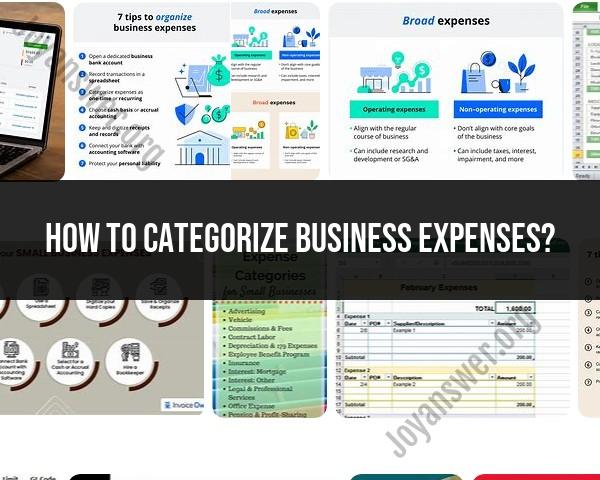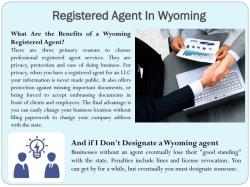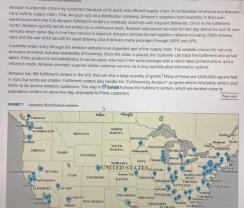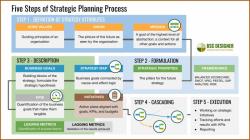How to categorize business expenses?
Categorizing business expenses is essential for accurate financial record-keeping, tax compliance, and overall financial management. Here’s a structured approach to categorize business expenses effectively:
1. Understand Expense Categories
- Operating Expenses: These are day-to-day expenses incurred in the normal course of business operations, such as rent, utilities, salaries, and office supplies.
- Cost of Goods Sold (COGS): Direct costs associated with producing goods or services sold by the business, including raw materials, labor, and manufacturing overhead.
- Capital Expenses: Larger expenditures that benefit the business over multiple years, such as equipment purchases or significant property improvements.
- Non-operating Expenses: Expenses that are not directly related to core business operations, such as interest payments on loans or losses from currency exchange.
2. Create a Chart of Accounts
- General Ledger: Establish a chart of accounts (COA) that categorizes expenses into specific accounts based on their nature and function. Common accounts include:
- Rent
- Utilities
- Office Supplies
- Salaries and Wages
- Advertising and Marketing
- Travel and Entertainment
- Insurance
- Taxes
- Depreciation
3. Use Accounting Software
- Automation: Implement accounting software like QuickBooks, Xero, or FreshBooks that facilitates expense tracking and categorization.
- Integration: Integrate bank feeds and credit card transactions to automatically categorize expenses based on predefined rules.
4. Manual Categorization
- Receipts and Invoices: Review all receipts, invoices, and payment records.
- Allocate: Assign each transaction to the appropriate account in your chart of accounts.
- Consistency: Ensure consistency in categorization practices to maintain accuracy and facilitate reporting.
5. Consider Tax Implications
- Tax Deductibility: Classify expenses according to tax rules to maximize deductions and comply with tax regulations.
- Consultation: Seek advice from a tax professional to ensure proper categorization and compliance with tax laws.
6. Review and Reconcile Regularly
- Monthly Reconciliation: Conduct regular reviews and reconciliations of accounts to detect errors and ensure accurate financial reporting.
- Adjustments: Make adjustments as needed to correct misclassifications or update expense categories.
7. Track and Analyze Expenses
- Financial Analysis: Monitor and analyze categorized expenses to understand spending patterns, identify cost-saving opportunities, and make informed business decisions.
- Budgeting: Use categorized expense data to create and manage budgets effectively.
Example of Categorization:
- Rent: Categorized under "Rent Expense" in operating expenses.
- Office Supplies: Classified as "Office Supplies" under operating expenses.
- Equipment Purchase: Recorded as "Equipment" under capital expenses.
Importance of Proper Categorization:
Accurate categorization of business expenses not only ensures compliance with accounting standards and tax regulations but also provides valuable insights into the financial health of the business. It enables businesses to track expenditures, manage cash flow effectively, and make strategic decisions based on financial data.
By following these steps and maintaining consistency in categorizing business expenses, businesses can streamline financial operations and optimize resource allocation for sustainable growth and profitability.
What criteria are used to categorize expenses within a business context?
Businesses categorize expenses based on several criteria that help them understand how their money is being spent and make informed financial decisions. Here are some of the most common criteria used for expense categorization:
Function: This categorizes expenses based on the business function they support. Common function-based categories include:
- Operations: Expenses related to day-to-day activities like rent, utilities, office supplies, and equipment.
- Personnel: Salaries, wages, bonuses, and employer-paid benefits for employees.
- Marketing and advertising: Costs associated with promoting the business, like website maintenance, online advertising, or print ads.
- Research and development (R&D): Expenses incurred for developing new products or services.
- Sales: Costs directly related to the sales process, such as commissions and travel expenses for salespeople.
- Technology and software: Expenses for software subscriptions, hardware maintenance, and IT services.
- Finance: Interest on loans, bank fees, and other finance-related costs.
Nature of expense: This categorizes expenses based on their inherent characteristics, such as:
- Fixed vs. variable: Fixed expenses stay the same each period (rent, salaries), while variable expenses fluctuate with business activity (inventory, utilities).
- Direct vs. indirect: Direct expenses can be directly tied to a specific product or service (materials used to manufacture a product). Indirect expenses benefit the business overall but cannot be tied to a specific product or service (office supplies).
- Capital vs. expense: Capital expenditures are for long-term assets like buildings or equipment, while expenses are for day-to-day operations.
Tax implications: Some expenses may be tax-deductible, influencing how they are categorized for tax reporting purposes.
Additional considerations:
- Industry standards: Certain industries might have standardized expense categories specific to their operations.
- Company size and complexity: Smaller businesses might use simpler categorization, while larger companies might have more granular categories.
The specific criteria a business uses for expense categorization will depend on its individual needs and preferences. However, by using a consistent and well-defined categorization system, businesses can gain valuable insights into their spending patterns and make better financial decisions.












